Do you know that PVC is the world's third-most widely produced synthetic plastic polymer? PVC injection molding is a highly versatile manufacturing process used to create countless products we use every day, from pipes and fittings to electrical components and medical devices.
In this article, we'll dive deep into the world of PVC injection molding. You'll learn about the unique properties of PVC, the intricacies of the injection molding process, and the numerous applications of this remarkable material across various industries.
Whether you're a product designer, manufacturer, or simply curious about the science behind everyday objects, this article will provide you with a wealth of knowledge and insights into the fascinating world of PVC injection molding.
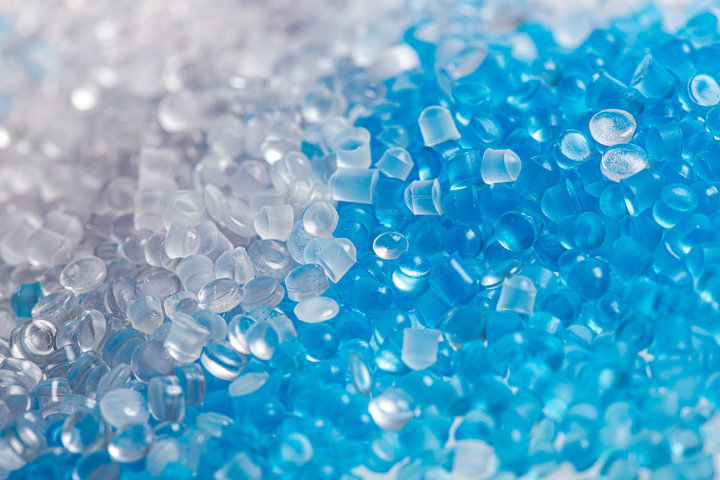
What is PVC Injection Molding?
Definition and Basic Concept
PVC injection molding is a versatile manufacturing process. It involves creating plastic parts by injecting molten PVC material into a mold. This method allows for the mass production of complex and precise components.
The process begins with heating PVC resin until it becomes liquid. Then, this molten PVC is injected into a pre-designed mold under high pressure. Once the material cools and solidifies, the mold opens to release the finished part. This cycle is repeated to produce multiple identical items efficiently.
PVC, or polyvinyl chloride, is a popular thermoplastic polymer used in injection molding. It is valued for its durability, chemical resistance, and cost-effectiveness. The material is available in both rigid and flexible forms, each suited for different applications.
Historical Background and Development of PVC
Polyvinyl chloride was first synthesized in the late 19th century, but its commercial use began in the 1920s. The American tire company B.F. Goodrich played a key role in developing PVC for industrial applications. They discovered methods to make PVC more flexible and durable, broadening its use in various industries.
The 1950s and 1960s saw a boom in PVC injection molding technology. Advances in molding equipment and techniques allowed for more efficient production of PVC components. These developments made PVC a staple in industries ranging from construction to healthcare.
Over the years, PVC injection molding has continued to evolve. Modern molding machines offer precise control over molding parameters, such as temperature and pressure. This ensures high-quality, consistent products. Today, PVC injection molding remains a preferred method for producing a wide range of items, from pipes and fittings to medical devices.
Types of PVC Used in Injection Molding
Rigid PVC
Rigid PVC, also known as unplasticized PVC (UPVC or PVC-U), is a tough and durable material. It offers high tensile strength and excellent resistance to impact. This makes it ideal for products that need to withstand physical stress.
Characteristics:
- High stiffness
- Flame resistance
- Excellent impact resistance
- Low flexibility
Applications:
- Construction: Used in making doors, windows, and pipes.
- Electronics: Suitable for machine housings and computer cases.
- Automotive: Commonly used in vehicle components like dashboards.
Rigid PVC is popular in construction due to its strength and weather resistance. It does not corrode or degrade easily, making it perfect for outdoor use.
Flexible PVC
Flexible PVC is created by adding plasticizers to the PVC resin. This makes the material more pliable and elastic. Flexible PVC can be tailored to different levels of softness based on the amount of plasticizer added.
Characteristics:
- High flexibility
- Customizable softness
- Good tensile strength
- Lower temperature resistance compared to rigid PVC
Applications:
- Medical: Used in tubing, catheters, and medical bags.
- Automotive: Ideal for interior trim and seals.
- Consumer Goods: Common in garden hoses, flooring, and flexible tubing.
Flexible PVC is favored in the medical industry for its ability to be sterilized and its flexibility, which is crucial for medical tubing and other devices.
Comparison Between Rigid and Flexible PVC
While both rigid and flexible PVC are used in injection molding, they have distinct differences in their properties and applications. Here are some key differences between the two:
| Property | Rigid PVC | Flexible PVC |
| Strength | High | Lower |
| Flexibility | Low | High |
| Durability | High | Moderate |
| Chemical Resistance | Excellent | Good |
| Thermal Stability | High | Lower |
| Common Applications | Construction, industrial | Electrical insulation, medical, consumer goods |
The choice between rigid and flexible PVC depends on the specific requirements of the application. Rigid PVC is ideal for parts that demand high strength, durability, and chemical resistance, such as pipes and fittings. Flexible PVC, on the other hand, is better suited for applications that require flexibility, softness, and insulation properties, such as cables and medical tubing.
Why Choose PVC for Injection Molding?
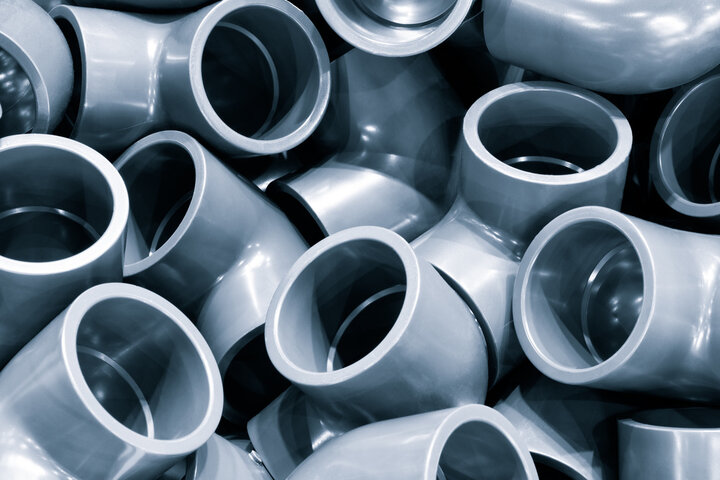
PVC (polyvinyl chloride) is a popular choice for injection molding due to its numerous advantages. This versatile thermoplastic polymer offers a combination of cost-effectiveness, design flexibility, durability, and environmental friendliness. Let's explore the reasons why PVC is an excellent material for injection molding applications.
| Physical | Density (g/cm3) | 1.16 to 1.65 |
| Linear Shrinkage (cm) | 0.000500 to 0.0120 |
| Mechanical | Tensile Strength at Yield (MPa) | 3.45 to 73.1 |
| Elongation at break (%) | 2 to 330 |
| Flexural Modulus (GPa) | 0.220 to 6.43 |
| Flexural Yield Strength (MPa) | 50.7 to 104 |
| Electrical | Dielectric Constant | 2.98 to 8.00 |
Cost-Effectiveness and Affordability
PVC injection molding is highly cost-effective. The PVC material itself is inexpensive compared to other thermoplastic polymers. This makes it a preferred choice for industries aiming to reduce production costs.
Low Material Costs: PVC resin is cheaper than many other plastics.
Efficient Production: The injection molding process allows for rapid production cycles, reducing labor costs.
Durability: Long-lasting molds mean fewer replacements and maintenance, saving money over time.
Case Study: A construction company switched to PVC pipes for their plumbing systems. They saw a 30% reduction in material costs compared to using metal pipes.
Versatility and Flexibility in Design
PVC injection molding offers incredible versatility. Whether you're using rigid PVC or flexible PVC, the material can be adapted to various designs and applications.
Customizable Flexibility: Flexible PVC can be made softer by adding plasticizers.
Wide Range of Applications: From PVC pipes and fittings to medical devices and automotive parts.
Ease of Molding: PVC can be easily shaped into complex forms, thanks to its adaptable properties.
For example, PVC mold design can be tailored to produce intricate parts with high precision. This flexibility makes PVC ideal for both consumer goods and industrial components.
Durability and Resistance to Chemicals, Weather, and Abrasion
One of the standout features of PVC is its durability. PVC injection molded products are resistant to various environmental factors.
Chemical Resistance: PVC can withstand exposure to acids, bases, and salts without degrading.
Weather Resistance: PVC does not corrode or deteriorate when exposed to sunlight and moisture.
Abrasion Resistance: The material's hardness ensures it remains intact under physical stress.
PVC piping systems are often used in harsh environments where other materials would fail. This durability extends the life of products and reduces maintenance costs.
High Precision and Dimensional Stability
PVC injection molding ensures high precision and dimensional stability, which is crucial for many applications.
Tight Tolerances: The molding process allows for precise control over mold cavity dimensions.
Consistency: Each molded part is identical, ensuring uniformity across large production runs.
Dimensional Stability: PVC maintains its shape and size over time, even under stress.
This precision is especially important in the medical and electronics industries, where exact specifications are critical.
Recyclability and Environmental Friendliness
PVC is not only durable but also environmentally friendly. It is one of the most recyclable plastics available.
Recyclable Material: PVC can be melted and remolded multiple times without losing its properties.
Reduced Waste: Scrap PVC from the injection molding process can be reused, minimizing environmental impact.
Energy Efficiency: Producing PVC requires less energy compared to some other plastics, reducing its carbon footprint.
By choosing PVC, manufacturers can contribute to a more sustainable production cycle. This makes PVC a smart choice for companies looking to reduce their environmental impact while maintaining high-quality production standards.
Disadvantages of PVC Injection Molding
Potential Health Risks Associated with PVC
While PVC injection molding offers many benefits, it also poses potential health risks. PVC material often contains additives like plasticizers and stabilizers. Some of these chemicals, such as phthalates, can be harmful.
Chemical Exposure: During the injection molding process, workers may be exposed to these additives.
Health Concerns: Long-term exposure can lead to respiratory issues and other health problems.
Safety Measures: It's crucial to use proper ventilation and personal protective equipment (PPE) to minimize these risks.
A study found that workers in PVC manufacturing facilities had a higher incidence of certain health issues. This highlights the need for strict safety protocols.
Environmental Concerns Related to PVC Production and Disposal
PVC production and disposal have significant environmental impacts. The manufacturing process releases harmful chemicals into the environment.
Pollution: PVC production generates chlorine gas, dioxins, and other toxic substances.
Waste Management: Disposing of PVC plastics is challenging since they are not biodegradable.
Recycling Issues: While PVC can be recycled, the process is complex and not widely implemented.
In many cases, discarded PVC ends up in landfills, where it can leach toxic substances into the soil and water. This underscores the need for better recycling and waste management practices.
Limitations in High-Temperature Applications
PVC material has a relatively low heat tolerance. This limits its use in high-temperature environments.
Heat Deflection: PVC begins to degrade at temperatures above 60°C.
Deformation: At high temperatures, injection molded PVC can lose its shape and strength.
Limited Applications: This makes PVC unsuitable for applications requiring high heat resistance.
For example, PVC is not ideal for parts exposed to continuous high temperatures, such as automotive engine components.
Possible Degradation and Release of Harmful Gases During Processing
During the PVC injection molding process, improper handling of the material can lead to degradation and release of harmful gases.
Thermal Degradation: If the barrel temperature exceeds safe limits, PVC can decompose.
Toxic Emissions: This decomposition releases hydrochloric acid (HCl) and other toxic gases.
Processing Conditions: Maintaining the correct molding parameters is essential to prevent this.
To mitigate these disadvantages, manufacturers must implement strict quality control measures and adhere to proper processing guidelines. This includes:
Using appropriate additives and stabilizers to minimize health risks
Implementing proper ventilation and safety protocols during production
Developing effective recycling and waste management strategies
Carefully controlling molding parameters to prevent material degradation
Exploring alternative materials for high-temperature applications
While PVC injection molding has its drawbacks, many of these challenges can be addressed through responsible manufacturing practices and continuous research into safer and more sustainable alternatives.
The Step-by-Step Process of PVC Injection Molding
PVC injection molding is a complex process that involves several crucial steps. From preparing the raw material to the final ejection of the molded part, each stage plays a significant role in ensuring the quality and consistency of the end product. Let's dive into the step-by-step process of PVC injection molding.
Preparing the PVC Material
Drying of PVC
Before starting the PVC injection molding process, it's crucial to dry the PVC material. PVC resin can absorb small amounts of moisture, which can cause defects in the final product.
Drying Time: Heat the PVC for 1.5 to 2.5 hours at 75-90°C.
Moisture Control: This step prevents bubbles and other imperfections in the molded parts.
Importance: Proper drying ensures better flow and quality of the injection molded components.
Adding Additives and Plasticizers
To improve the properties of PVC plastics, additives and plasticizers are mixed with the resin. These substances enhance the material's performance during the molding process.
Additives: Increase the heat stability of PVC to prevent decomposition.
Plasticizers: Make the PVC more flexible, depending on the product requirements.
Process: Mixing these compounds with the PVC resin is essential for achieving the desired characteristics in the final molded products.
Injection Molding Machine Setup
Machine Requirements and Specifications
The setup of the injection molding machine is vital for producing high-quality PVC parts. The machine must be capable of handling the specific needs of PVC injection.
Machine Type: Use a screw-type injection molding machine.
Compression Ratio: Optimal ratio ranges from 1:1.6 to 1:1.2.
Screw Speed: Control between 50-70 rpm to avoid excessive shear heat.
Screw Length to Diameter Ratio
The screw length to diameter ratio (L/D) affects the mixing and melting efficiency of the PVC.
Standard Ratios: Most machines offer an L/D ratio of 19:1 to 21:1.
Optimized Ratios: Some advanced machines provide ratios up to 24:1.
Function: Ensures thorough mixing and even heating of the PVC material.
Barrel Temperature Settings
Controlling the barrel temperature is critical in the PVC molding process.
Temperature Zones: Feed (140-160°C), Middle (150-170°C), and Front (160-180°C).
Nozzle Temperature: Should be 10-20°C lower than the front zone to prevent overheating.
Impact: Proper temperature control prevents material degradation and ensures smooth flow into the mold cavity.
Injection Phase
Injection Speed and Pressure
The injection phase involves filling the mold with molten PVC under precise conditions.
Injection Speed: Start slow to medium to avoid material degradation.
Injection Pressure: Maintain 20-40% of the machine's maximum to ensure consistent filling.
Importance: Correct injection velocity and pressure prevent defects and ensure uniformity.
Mold Design Considerations
Designing the mold correctly is crucial for the quality of the injection molded parts.
Gate Design: Use appropriate gate types like needle or submarine gates for small parts.
Runner System: Design runners to facilitate even flow of PVC into the mold cavities.
Venting: Ensure proper venting to release trapped air and avoid defects.
Cooling and Ejection
Cooling Process and Mold Temperature Control
Once the PVC is injected into the mold, the cooling process begins. Controlling the mold temperature is essential for solidifying the part without warping.
Cooling Time: Adjust based on part size and thickness.
Temperature Control: Keep mold temperatures between 20-60°C for optimal cooling.
Uniform Cooling: Ensures the part retains its shape and dimensions.
Ejection Methods and Screw Cushion
After cooling, the molded part needs to be ejected from the mold. The ejection method and screw cushion play key roles here.
Ejection Method: Use mechanical or hydraulic systems to release the part gently.
Screw Cushion: Maintain a 2-3mm cushion to ensure consistent shot size and quality.
Importance: Proper ejection techniques prevent damage to the molded parts and ensure they are ready for use.
By following these steps, you can achieve high-quality, consistent results in PVC injection molding. Each phase is crucial and must be carefully controlled to produce the best possible molded products.
Design Considerations for PVC Injection Molding
When designing parts for PVC injection molding, several key factors must be taken into account to ensure optimal performance and manufacturability. Let's explore the critical design considerations that can make or break your PVC injection molded parts.
Wall Thickness and Uniformity
In PVC injection molding, maintaining consistent wall thickness is crucial. Uneven wall thickness can lead to issues like warping and incomplete filling during the molding process.
Uniform Walls: Ensure that wall thickness remains consistent throughout the part. This helps in preventing defects and ensuring structural integrity.
Recommended Thickness: For PVC material, the wall thickness should typically range between 1.27 and 6 mm.
Gradual Transitions: If thicker sections are necessary, transition gradually to avoid stress concentration and flow issues.
Consistent wall thickness helps in achieving high-quality injection molded parts with fewer defects.
Shrinkage and Warping Prevention
Shrinkage and warping are common issues in the PVC molding process. Proper design and control of molding conditions can minimize these problems.
Shrinkage Rates: PVC has a low shrinkage rate of 0.2% to 0.5%. This must be considered during mold design.
Cooling Time: Adequate cooling time helps in reducing warping. Ensure uniform mold cooling to prevent uneven shrinkage.
Mold Design: Use proper gating and venting to ensure even filling and cooling of the mold cavity.
These practices help maintain the dimensional accuracy and stability of molded parts.
Proper Use of Radii and Draft Angles
Incorporating appropriate radii and draft angles in the design helps in the efficient production of injection molded PVC parts.
Radii: Apply radii to internal and external corners. Minimum radii should be 25% of the wall thickness to reduce stress.
Draft Angles: Include draft angles of 0.5% to 1% on vertical walls to facilitate easy ejection from the mold.
Stress Reduction: Rounded corners help in reducing stress concentrations, enhancing the durability of the parts.
These design elements ensure smoother molding operations and higher-quality parts.
Gate and Runner Placement
Gate and runner design is critical in the PVC injection molding process. Proper placement ensures efficient material flow and minimizes defects.
Gate Types: Use appropriate gate types such as needle or submarine gates for small parts.
Runner Design: Design runners to facilitate smooth flow of the PVC material into the mold cavities.
Cold Slug Wells: Include these at the end of runners to prevent poorly melted material from entering the mold cavity.
Proper gate and runner placement enhances the efficiency of the molding sequence.
Achieving Tight Tolerances
Achieving tight tolerances in PVC injection molding requires precise control over various parameters.
Mold Precision: Ensure that the mold is designed with high precision to maintain tight tolerances.
Process Control: Maintain consistent injection pressure, screw speed, and barrel temperature to achieve dimensional accuracy.
Material Properties: Understand the properties of the PVC material to adjust molding conditions accordingly.
By focusing on these factors, manufacturers can produce injection molded parts with tight tolerances and high-quality finishes.
These design considerations are essential for optimizing the PVC injection molding process, ensuring high-quality, reliable, and durable molded products.
Applications of PVC Injection Molding
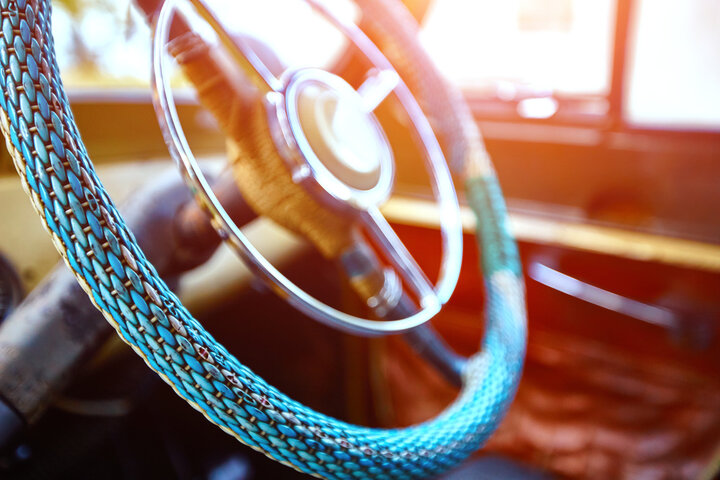
Automotive Industry
Dashboard Components
PVC injection molding is widely used in the automotive industry, especially for dashboard components. These parts require high precision and durability, which PVC provides.
Durability: PVC's high tensile strength and impact resistance make it ideal for dashboards.
Customization: The flexibility in PVC molding allows for intricate designs and customizations.
Heat Resistance: While PVC is not suitable for high temperatures, it performs well in the temperature range found in vehicle interiors.
Interior Trim and Panels
PVC is also used for various interior trim and panels in vehicles. These parts need to be both durable and aesthetically pleasing.
Flexibility: Flexible PVC can be molded into complex shapes, fitting seamlessly into vehicle interiors.
Finish Quality: PVC parts can have a high-quality finish, which enhances the overall look of the vehicle's interior.
Cost-Effective: PVC's affordability makes it a preferred material for mass production of automotive parts.
Building and Construction
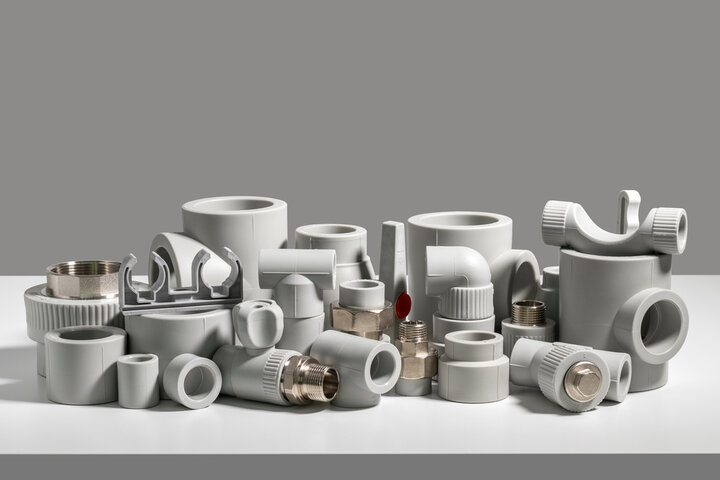
Pipes and Fittings
One of the most common uses of PVC injection molding is in the building and construction industry, particularly for pipes and fittings.
Corrosion Resistance: PVC pipes are resistant to corrosion, making them ideal for plumbing and drainage systems.
Strength: Rigid PVC provides the necessary strength for these applications.
Ease of Installation: PVC's lightweight nature makes installation easier and quicker.
Window and Door Profiles
PVC is extensively used for window and door profiles due to its durability and weather resistance.
Weather Resistance: PVC profiles can withstand harsh weather conditions without degrading.
Insulation: PVC provides excellent insulation, making it energy-efficient.
Maintenance-Free: These profiles require minimal maintenance, adding to their appeal.
Siding and Gutters
PVC is also used for exterior applications like siding and gutters.
Durability: PVC siding and gutters are durable and can last for many years.
Aesthetics: Available in various colors and finishes, PVC siding enhances the exterior look of buildings.
Low Maintenance: Like other PVC products, siding and gutters require little maintenance.
Medical and Healthcare
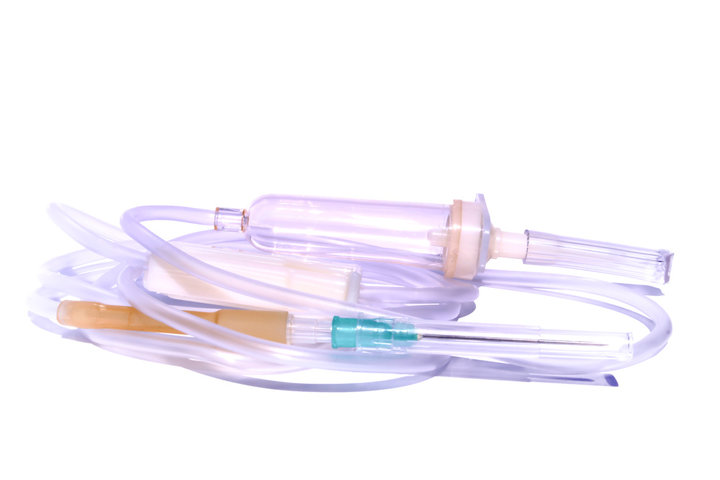
Medical Tubing and Masks
PVC injection molding is crucial in the medical and healthcare industry for producing medical tubing and masks.
Flexibility: Flexible PVC is ideal for medical tubing, providing the necessary flexibility and durability.
Sterilization: PVC can be easily sterilized, making it safe for medical use.
Comfort: PVC masks are comfortable for patients to wear for extended periods.
Catheters and Syringes
PVC is also used to manufacture catheters and syringes, essential tools in medical care.
Safety: PVC's chemical resistance ensures that it does not react with medications.
Precision: The injection molding process allows for the production of precise and reliable medical components.
Cost-Effective: PVC's affordability helps keep healthcare costs down.
Electrical and Electronics
Wire Insulation and Connectors
In the electrical and electronics industry, PVC injection molding is used for wire insulation and connectors.
Electrical Insulation: PVC is an excellent insulator, preventing electrical shorts.
Durability: It can withstand mechanical stress, making it ideal for wire coverings.
Flame Resistance: PVC's flame-resistant properties enhance the safety of electrical products.
Switches and Sockets
PVC is also used for producing switches and sockets.
Safety: The material's insulating properties make it safe for use in electrical components.
Durability: PVC switches and sockets are durable and long-lasting.
Design Flexibility: PVC molding technology allows for various designs and configurations.
Consumer Goods and Packaging
Toys and Sporting Goods
PVC injection molding is popular in the production of toys and sporting goods due to its versatility and safety.
Safety: PVC plastics are safe for use in children's toys.
Durability: The material can withstand rough handling, making it ideal for toys and sports equipment.
Customization: PVC can be molded into various shapes and sizes, allowing for creative designs.
Food Containers and Packaging
PVC is widely used for food containers and packaging.
Food Safety: PVC material used in food containers meets safety standards, ensuring that it does not contaminate food.
Durability: PVC containers are durable and can be reused multiple times.
Transparency: Clear PVC allows consumers to see the contents, making it ideal for packaging.
By leveraging the unique properties of PVC injection molding, manufacturers can produce a wide range of high-quality, durable, and cost-effective products across various industries.
Alternatives to PVC Injection Molding
While PVC is a popular choice for injection molding, it may not always be the best material for every application. In some cases, alternative plastics may offer superior properties or better suit specific requirements. Let's explore some of the other plastic materials commonly used in injection molding and compare their properties and applications to PVC.
Other Plastic Materials Suitable for Injection Molding
Polypropylene (PP)
Polypropylene (PP) is a versatile thermoplastic polymer widely used in the injection molding process. It is known for its toughness and resistance to chemicals.
Characteristics:
Applications:
Automotive Parts: Used for bumpers and battery cases.
Packaging: Ideal for containers and caps.
Textiles: Used in fibers and ropes.
PP is a preferred material for products requiring durability and flexibility.
High-Density Polyethylene (HDPE)
High-Density Polyethylene (HDPE) is another popular material in plastic molding. It is known for its high strength-to-density ratio.
Characteristics:
Applications:
Containers: Commonly used for milk jugs and detergent bottles.
Pipes: Used in water and gas distribution.
Toys: Ideal for durable and safe toys.
HDPE is chosen for applications where durability and resistance to environmental stress are essential.
Acrylonitrile Butadiene Styrene (ABS)
Acrylonitrile Butadiene Styrene (ABS) is a robust and impact-resistant polymer. It is widely used in the injection molding industry.
Characteristics:
High impact resistance
Good rigidity
Excellent surface finish
Applications:
Electronics: Used for computer keyboards and housings.
Automotive: Ideal for dashboard trims and wheel covers.
Consumer Goods: Common in toys like LEGO bricks.
ABS is favored for its strength and ease of molding into complex shapes.
Comparison of Properties and Applications
When considering alternatives to PVC injection molding, it's important to compare the properties and applications of each material. Here's a quick comparison of PVC, PP, HDPE, and ABS:
| Property | PVC | PP | HDPE | ABS |
| Density | Medium | Low | High | Medium |
| Strength | Good | Good | High | High |
| Impact Resistance | Good | Good | High | High |
| Chemical Resistance | Excellent | Excellent | Excellent | Good |
| Heat Resistance | Low | High | Medium | Medium |
| UV Resistance | Good | Good | Excellent | Poor |
| Flexibility | Good | Good | Low | Low |
| Ease of Processing | Good | Excellent | Good | Excellent |
PVC: Best for applications needing chemical resistance and flexibility, such as medical tubing and pipes.
PP: Ideal for automotive parts and packaging due to its chemical resistance and flexibility.
HDPE: Suited for containers and pipes where high impact resistance is required.
ABS: Perfect for electronics and automotive parts requiring high impact resistance and a good surface finish.
Each of these materials offers distinct advantages, making them suitable for different applications in the injection molding industry. Choosing the right material depends on the specific requirements of the product, such as durability, flexibility, and cost.
Conclusion
PVC injection molding is crucial for creating durable, cost-effective parts. It offers versatility and precision, suitable for many industries. Future trends include improved sustainability and advanced molding techniques. Choose the right partner for quality results. Reliable expertise ensures successful projects.
Get a Quote from Team Mfg Today
Team Mfg is your expert partner in PVC injection molding. With extensive experience and state-of-the-art facilities, we are ready to bring your custom projects to life. Get an instant quote today and see how our dedicated team can meet your specific needs efficiently. Team Mfg – ensuring quality and precision in every project.














